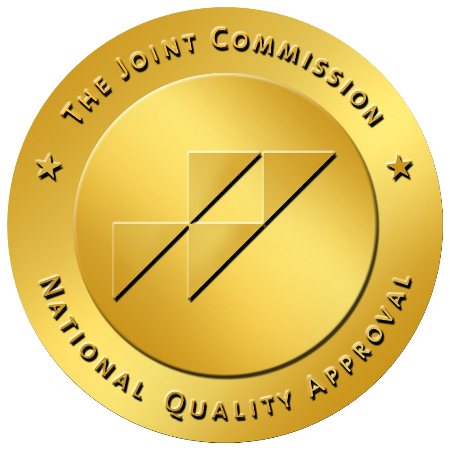What Are Cocaine Eyes?

Cocaine is a stimulant that significantly impacts both the body and mind. Its effects on the eyes are particularly noticeable, often referred to as “cocaine eyes.” This term describes a range of symptoms, including dilated pupils, bloodshot eyes, and increased sensitivity to light.
These symptoms not only indicate recent cocaine use but can also highlight the potential for long-term damage to eye health. Recognizing these signs and symptoms is crucial for understanding the physical consequences of cocaine use and the importance of seeking appropriate cocaine addiction treatment.
Cocaine Eyes
“Cocaine eyes” or “cocaine eye syndrome” refers to the distinct visual changes in the eyes caused by cocaine use. One of the most notable symptoms is the dilation of pupils, commonly known as cocaine pupils.
Cocaine makes pupils bigger by relaxing the muscles in your eyes and stimulating the sympathetic nervous system. The dilated pupils may remain excessively large even in bright light, causing discomfort and sensitivity to light.
Another prominent feature of cocaine eyes is bloodshot eyes. Cocaine causes vasoconstriction, which increases blood pressure and can make the small blood vessels in the eyes more visible. This leads to a red, irritated appearance.
Additionally, cocaine can dry out the eyes by reducing tear production, contributing to redness and discomfort. The lack of moisture also makes it easier for foreign particles to enter and irritate the eyes, further aggravating these symptoms.
The combination of dilated pupils and bloodshot eyes creates a distinct, glossy appearance. This glossiness is partly caused by decreased eye movements and a blinking reflex caused by cocaine use, which can make the eyes appear more open and fixed. The reduced blinking rate can lead to dryness and increase the likelihood of foreign particles entering the eyes, exacerbating irritation and discomfort.

What Does Cocaine Do to Your Eyes?
Cocaine affects the eyes mainly because of its powerful stimulant properties. As a stimulant, cocaine increases the activity of the central nervous system, leading to several physiological changes:
- Dilated Pupils: The stimulation of the sympathetic nervous system by cocaine causes the pupils to dilate, a condition known as mydriasis. This dilation makes the eyes more sensitive to light, which can be uncomfortable and lead to difficulty adjusting to different lighting conditions. People with dilated pupils because of snorting cocaine may find bright lights particularly painful and may wear sunglasses to alleviate this discomfort.
- Bloodshot Eyes: The narrowing of blood vessels and constricting of blood flow during cocaine use increases blood pressure, making the blood vessels in the eyes more prominent. This can lead to the eyes appearing bloodshot or red. The reduced tear production further contributes to this condition, as the eyes become dry and irritated, making the blood vessels more visible.
- Foreign Particles and Dry Eyes: Cocaine’s impact on the blinking reflex can lead to a reduced frequency of blinking, which normally helps keep the eyes moist and debris-free. The reduction in blinking can cause dryness, making the eyes more susceptible to irritation from foreign particles. This can lead to a sensation of grittiness or discomfort in the eyes, prompting users to rub their eyes, which can exacerbate irritation and potentially introduce bacteria, leading to infections.
- Cocaine Conjunctivitis: Direct exposure to cocaine or indirect contact through contaminated hands can cause conjunctivitis, an inflammation of the conjunctiva. This condition, often referred to as cocaine conjunctivitis, is characterized by redness, irritation, and discharge. It can be particularly severe and require medical attention to prevent complications.
Long-Term Cocaine Impact on the Eyes
The long-term use of cocaine can lead to severe and sometimes irreversible damage to the eyes. The following are some of the potential long-term impacts:
- Retracting of the Upper Eyelid: Chronic cocaine use can lead to the retraction of the upper eyelid, causing a condition where the eyelid appears higher than normal. This condition exposes more of the eye, increasing the risk of dryness, light sensitivity, and injury. The aesthetic changes can also be distressing to people, adding to the psychological burden of addiction.
- Optic Nerve Damage: The optic nerve, which is crucial for transmitting visual information from the eye to the brain, can be damaged by prolonged cocaine use. Cocaine’s ability to narrow blood vessels can reduce blood flow to the optic nerve, potentially leading to optic neuropathy. This condition can cause symptoms such as blurred vision, decreased visual clarity, and, in severe cases, permanent vision loss. The risk of optic nerve damage increases with the duration and frequency of cocaine use.
- Corneal Ulcers: The combination of reduced tear production and increased exposure to foreign particles can lead to corneal ulcers in chronic cocaine users. These are painful sores on the cornea that can significantly impair vision. Corneal ulcers can lead to permanent scarring and vision loss if left untreated. Prompt medical treatment is essential to manage this condition and prevent further complications.
- Increased Risk of Infections: Cocaine use can weaken the immune system, making the eyes more susceptible to infections and eye conditions. Conditions like cocaine conjunctivitis and other bacterial or viral infections can become more frequent and severe, particularly if people frequently touch their eyes with unclean hands. Infections can lead to additional complications, including chronic inflammation and vision problems.
- Visual Hallucinations and Blurred Vision: Some people who use cocaine may experience visual hallucinations or blurred vision. These symptoms can occur because of the drug’s side effects on the brain’s visual processing areas or due to damage to the optic nerve and other ocular structures. Visual disturbances can be distressing and may persist even after the drug’s acute effects have worn off.

Credit: Yoanmb
CC BY SA 4.0
Eye Conditions and Cocaine Use Disorder Help
Recognizing the symptoms of cocaine abuse, such as changes in the eyes, is an important first step in seeking help. Cocaine use disorder is a serious condition that requires comprehensive treatment. The damage caused by cocaine, including the effects on the eyes, can often be managed or mitigated with timely intervention.
For those experiencing significant eye-related symptoms, consultation with an ophthalmologist or eye specialist is recommended. These specialists can diagnose and treat specific conditions, such as optic nerve damage, corneal ulcers, and conjunctivitis, providing relief and preventing further complications. Early intervention can improve the prognosis for many eye-related issues and enhance overall quality of life.
Cocaine Addiction Treatment at Northridge Addiction Treatment Center
Struggling with substance use can be a daunting experience, and it’s natural to have questions or doubts. If you or a loved one is facing these challenges, know you’re not alone. Many people hesitate to seek treatment for various reasons.
At Northridge Addiction Treatment Center, we have a team of compassionate professionals who understand how overwhelming the thought of change can be. We take the time to address your concerns and create a personalized treatment plan for your unique needs.
Our private and intimate residential treatment center offers a serene and safe environment where you can gain confidence in your recovery journey. We use evidence-based treatments and therapies to tackle the root causes of addiction, helping you develop healthy coping mechanisms and communication skills for a successful future.
Our caring specialists are ready to support you in starting a new chapter rooted in recovery. Contact us today to begin your journey.
Find Meaningful Recovery
Our caring and compassionate specialists are eager to help you comfortably navigate this journey to recovery. Our individualized treatment plan, programs, and therapies may be a perfect match for you or your loved one. Let us assist you in living the happy life you deserve. It starts with a phone call.




